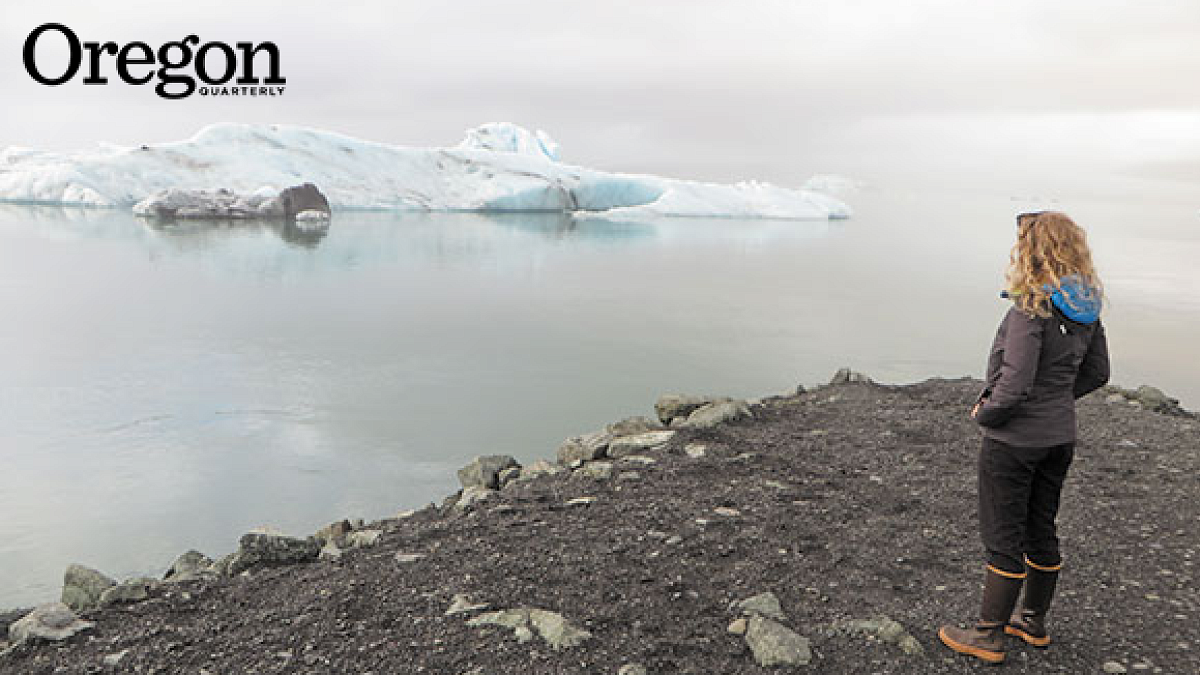Until now, the roughly 2,000 Icelanders who live in the town of Höfn, (pronounced “huf”) have supported themselves on the backs of two steady industries—fishing and helping tourists explore the nearby Vatnajökull ice cap and the glaciers that flow from it.
Those glaciers are melting, gouging lagoons into the earth behind them as they retreat, and everything in Höfn is slowly changing. Out-of-towners have to be shown new ways to the ice caves. Farmers who have taken sheep across the tops of the glaciers to pasture for centuries need to find new routes. Children must stare down an increasingly uncertain economic future.
These climate change impacts are just as significant as ice shrinkage, argues glaciologist “M” Jackson. Yet scientists documenting the effects of global warming in Iceland too often drop in, get numbers, and leave without even interacting with locals, she says. “It was not uncommon for Icelanders to tell me they did not know what science has been performed on the glaciers until they read it in an academic journal a year later.”
Jackson wants to change that. A Fulbright scholar who lectures and leads tours for National Geographic, she is focusing her doctoral work in the UO’s geography department on a new approach to studying glaciers and climate change that includes qualitative information—firsthand observation, anecdotes, photos, and folklore—alongside the traditional quantitative data.
Jackson’s fieldwork in Iceland was funded by a nine-month Fulbright Arctic Initiative research grant—her second glacier-related Fulbright—as well as by the National Science Foundation.
To observe, she immersed. She participated in search and rescue, helped run a guest house, and worked at a research station. She formally interviewed more than 200 people and even collected children’s lullabies that reference the glaciers’ scary moans.
When simply asked about their thoughts about glaciers, some people don’t know how to respond, she says. So to break the ice, she asked locals to take photographs, then asked why they chose each image. The answers were sometimes surprising. One woman, for example, submitted a glacier-free photo of a place where she used to play as a child. Not a promising start, but when Jackson asked for details, the woman reminisced about hearing the ice snap of a distant glacier as it calved. Climate change, to her, means the loss of childhood sounds. Jackson couldn’t contain her delight at digging out this detail. “As a researcher I would never think to ask anybody, ‘What sounds did you hear from the glacier’?”
Why is this memory important? Because every glacier is different, and every community is affected differently as its glacier melts.
Jackson found that in Höfn, melting ice even triggered restlessness in local teenagers. Heavy glaciers once pressed the land like a hand on a sponge. As the glaciers melt, the ground bounces back, a phenomenon called isostatic rebound. Now, the fishing boats are scraping the bottom of the entrance to Höfn’s harbor. Between threats to the fishing and tourist trades, Jackson found, the youth of Höfn are worried about their futures if they stay in town.
UO geography professor Alec Murphy, cochair of Jackson’s doctoral candidate committee, said that when he visited Jackson in Iceland, she showed him a photography project she conducted near ice caves frequented by tourists. The time lapse recorded not only how many people came, but also what they did while they were there. “What this approach has the potential to do is broaden the conversation, to help us recognize that there are these cultural impacts that can be of significance, too.”
As Jackson has discovered, innovative approaches to studying climate change can stir up controversy in the United States. A paper she coauthored with her other cochair, Mark Carey, UO associate professor of environmental history, emphasized the importance of incorporating female and indigenous perspectives, even those expressed in the humanities and social sciences, when developing responses to climate change. Called “Glaciers, Gender, and Science: A Feminist Glaciology Framework for Global Environmental Change Research,” the paper triggered the ire of conservative pundits when it was published earlier this year. That criticism, in turn, made Jackson the target of a wave of online harassment, which quickly turned misogynist and distracting.
Her Icelandic colleagues were mystified by the tone of the attacks, she says. But Höfn also has climate-change deniers. “When I ask them about climate change specifically, they’ll say, of course I believe in climate change, and it’s a shame about those Pacific Islands and that California drought, but here, there’s no problem.”
They have centuries of folk wisdom to back them up—and yet they’re wrong, she muses. “It’s part of the glaciers’ natural rhythms to oscillate, to get bigger and smaller. Some don’t think there’s a link between a glacier getting smaller today and climate change because they have firsthand accounts all the way back to the ninth century that the glacier does this.
“But the rate of recession happening now has never been experienced before.”
—By John Strieder
John Strieder, a writer and video producer, is a master’s degree student in multimedia journalism.


